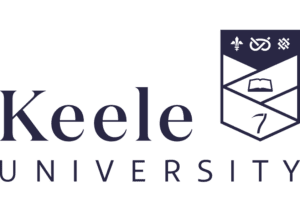How Keele University Successfully Sustained a Large-Scale Organizational Transformation
At the end of October 2024, over 50 higher education leaders congregated in Washington, D.C. for the launch of EAB’s annual IgnitED summit to discuss the sector’s most pressing challenges, including how to successfully navigate an organizational transformation.
Recognizing the challenges of generating support and participation in transformation efforts, EAB experts presented in-depth case studies of three distinct approaches to organizational transformation. Each example showcased how an institution worked with their culture to catalyze transformation by assessing their campus conditions and employing an approach based on that diagnosis.
One of these examples was Keele University, an institution located in the United Kingdom. Continue reading to learn how they implemented a transformation, entitled “One Keele,” that touched academic, student, and professional services—and what lessons every institution can take away from their success.
Institutional Profile: Keele University
Keele, UK
210M OPEX
Public Research
12.5K Students
1.5K Staff

One Keele: A Large-Scale Implementation
-
Timeline
Three years ongoing
-
Approach
Top-down mandate championed by COO
-
Goals
- Increase operations efficiency
- Improve service effectiveness
- Modernize organizational strucutre
-
Methodology
Shared services migration and process improvement in six professional service areas
What did Keele change?
The One Keele initiative spanned organizational structures, processes, and even academic programming. While the magnitude of the effort was vast, it was largely comprised of known higher education shared services and process improvement tactics, applied at scale. Find the highlights of the One Keele transformation below:
Centralization and consolidation of professional service areas
Keele’s chief operating officer (COO) centralized all six professional service areas under him, expanding shared services to HR and Procurement. Keele also restructured admissions, recruitment, and marketing into a streamlined Global Student Recruitment & Marketing department.
Streamlined processes in newly centralized areas
Keele implemented over 25 process improvements in the newly centralized areas, which were identified in process design workshops. Examples include:
- Developing a university-wide full-year timetable
- Optimizing the use of analytics to inform the design, targeting, and delivery of student services
- Standardizing and replacing personal tutoring with an academic mentor model
- Implementing a new curriculum management system
Transition to cloud-based infrastructure
Keele transitioned the entirety of its digital environment from local servers on-premises to cloud-first. This enabled the digitization of HR, expense, and procurement processes.
Redesigned academic units and structures
Two colleges streamlined their organizational structures based on standardized job descriptions from the COO. Keele also implemented a strategic, continuous portfolio review process leading to scaled program redesign.
Increased centralized support embedded within schools
The COO established a set of standardized professional service roles reporting to him within schools (e.g., head of faculty operations).
How did Keele implement changes?
First and foremost, Keele University assessed the conditions on campus preceding their transformation. With this information, Keele opted for a wide-ranging, continuous improvement transformation, hiring a COO experienced in driving this type of change.
Campus conditions preceding transformation
-
Cultural receptiveness to change
- Strong leadership mandate for transformation
- Campus recognition of organizational inefficiencies, but resistant to change
-
Organizational effectiveness
- Professional services costs benchmarked far above comparator institutions
- Minimal central coordination; time-consuming, overly-complex processes
-
History of transformation initiatives
- No previous evaluation or restructuring of professional service delivery
EAB identified five replicable characteristics that enabled Keele’s success.
1. Unwavering leadership mandate
Keele’s COO was able to stand firm and weather periodic campus pushback due to a persistent public mandate from his institution’s vice-chancellor and board.
2. Rigorous assessment
From the outset of One Keele and at multiple junctures since, Keele has transparently benchmarked its administrative and academic service performance against peer institutions to identify areas for improvement.
3. Frontline feedback
The implementation team gleaned insights from 1000+ customers and staff through forums, survey responses, and design workshops. Keele hosted the process design workshops in six key areas specifically to identify process pain points and build improvement plans.
4. Emphasis on professional staff development
To ensure staff would be successful in new structures and to preempt backsliding, Keele built internal talent pipelines and hosted conferences reinforcing service values that fostered staff engagement and promotion.
5. Continuous, iterative planning
Keele’s transformation planning was defined by intentional review, reassessment, and recalibration at least every two years, allowing them to incorporate learnings from and respond to unexpected roadblocks. To kickstart third phase efforts in 2023, Keele reinitiated campus benchmarking and consultation and pivoted to focus on process and technology initiatives to support existing people changes.
Results of Keele’s transformation
-
Organizational structure
80 FTE reduction
27% of professional service staff promoted
100% of professional service areas brought centrally
-
Processes
25+ re-envisioned processes across six key focus areas:
- Timetabling and space usage
- Admissions, marketing, and recruitment
- Human resources
- Expenses and procurement
- Education program development
- Student support
-
Academics
14 schools joined new administrative structure
100% of research administration brought centrally
1 new professional service area for experiential learning
Overall cost savings
£3M
Immediate payroll savings4
Years without professional services cost growth£23M
Savings reinvested in academic staffWant to learn more about organizational transformations?
While not every campus shares the conditions present at Keele, higher education leaders who reviewed Keele’s case study have been impressed by their resilience and success. IgnitED attendees (80% of whom were leading their own transformation efforts) seconded the importance of Keele’s constant, iterative planning and allowing transformations to evolve beyond their original end states.
Keele’s example was only one case study previewed at these sessions. Transformation leaders who desire to unpack essential insights for driving higher education change should join their peers at EAB’s annual executive roundtable for leaders of strategy, chief business officers, and provosts.
This resource requires EAB partnership access to view.
Access the research report
Learn how you can get access to this resource as well as hands-on support from our experts through Strategic Advisory Services.
Learn MoreAlready a Partner?
Partner Log InGreat to see you today! What can I do for you?